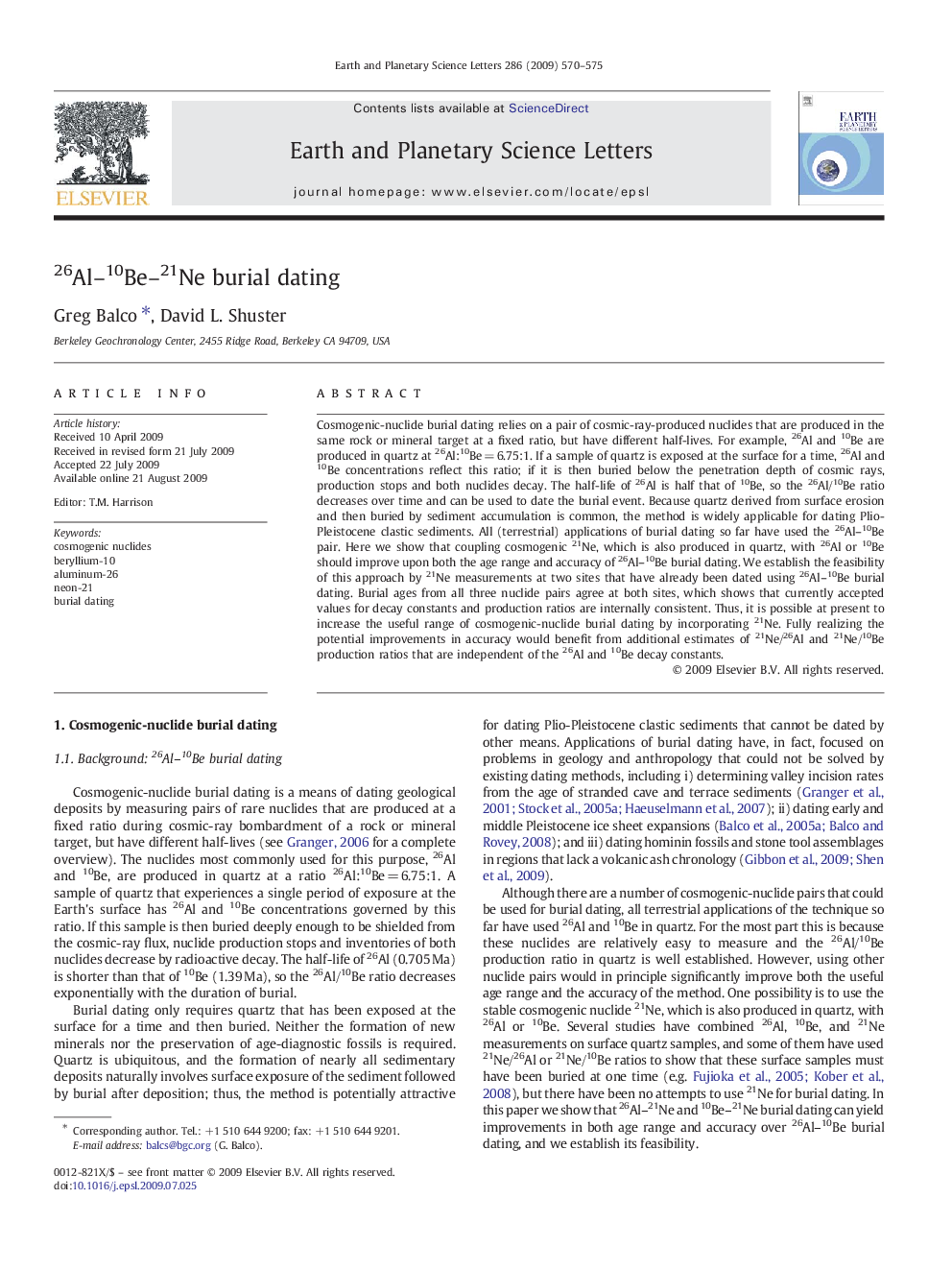| کد مقاله | کد نشریه | سال انتشار | مقاله انگلیسی | نسخه تمام متن |
|---|---|---|---|---|
| 4679135 | 1634866 | 2009 | 6 صفحه PDF | دانلود رایگان |

Cosmogenic-nuclide burial dating relies on a pair of cosmic-ray-produced nuclides that are produced in the same rock or mineral target at a fixed ratio, but have different half-lives. For example, 26Al and 10Be are produced in quartz at 26Al:10Be = 6.75:1. If a sample of quartz is exposed at the surface for a time, 26Al and 10Be concentrations reflect this ratio; if it is then buried below the penetration depth of cosmic rays, production stops and both nuclides decay. The half-life of 26Al is half that of 10Be, so the 26Al/10Be ratio decreases over time and can be used to date the burial event. Because quartz derived from surface erosion and then buried by sediment accumulation is common, the method is widely applicable for dating Plio-Pleistocene clastic sediments. All (terrestrial) applications of burial dating so far have used the 26Al–10Be pair. Here we show that coupling cosmogenic 21Ne, which is also produced in quartz, with 26Al or 10Be should improve upon both the age range and accuracy of 26Al–10Be burial dating. We establish the feasibility of this approach by 21Ne measurements at two sites that have already been dated using 26Al–10Be burial dating. Burial ages from all three nuclide pairs agree at both sites, which shows that currently accepted values for decay constants and production ratios are internally consistent. Thus, it is possible at present to increase the useful range of cosmogenic-nuclide burial dating by incorporating 21Ne. Fully realizing the potential improvements in accuracy would benefit from additional estimates of 21Ne/26Al and 21Ne/10Be production ratios that are independent of the 26Al and 10Be decay constants.
Journal: Earth and Planetary Science Letters - Volume 286, Issues 3–4, 15 September 2009, Pages 570–575